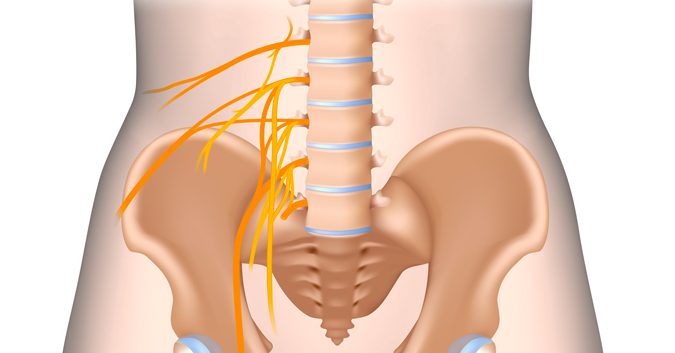What are the symptoms of cruralgia?
In its usual form, related to a herniated disc, the onset is usually sudden, characterized by lumbar pain (low back pain) that goes down into the buttock, bypassing the hip to pass in front of the thigh and down into the calf.
This pain may be accompanied by other sensations such as tingling or tingling, typical of neuralgia. There may also be areas of less sensation (hypoaesthesia). A motor deficit can also cause difficulty lifting the thigh or lifting the foot.
When should you consult?
In general, the question does not arise and the affected person consults quickly, because the pain is debilitating and needs to be quickly relieved. However, in some cases, the pain is not in the foreground or the signs are more atypical: progressive onset, association with a fever, etc. which requires an assessment to look for a cause other than the herniated disc.
Some herniated discs require urgent treatment. Fortunately, they are relatively rare. These hernias where it is necessary to consult urgently are those where there are:
– A very strong pain which calls for a powerful analgesic treatment,
– Paralysis (major motor deficit)
– Urinary disorders (loss of urine, difficulty urinating)
– Digestive disorders (sudden constipation)
– Sensory disorders (anesthesia of the perineum, area between the front of the thighs and the anus)
If any of these signs appear during cruralgia, it is a surgical emergency. Indeed, without treatment, nerve compression can lead to irreversible neurological damage (urinary disorders, paralysis, anesthesia, etc.). Treatment aims to relieve the nerves and prevent them from continuing to be compressed and irreversibly damaged.
In the event that these signs appear, it is therefore necessary to consult quickly.










